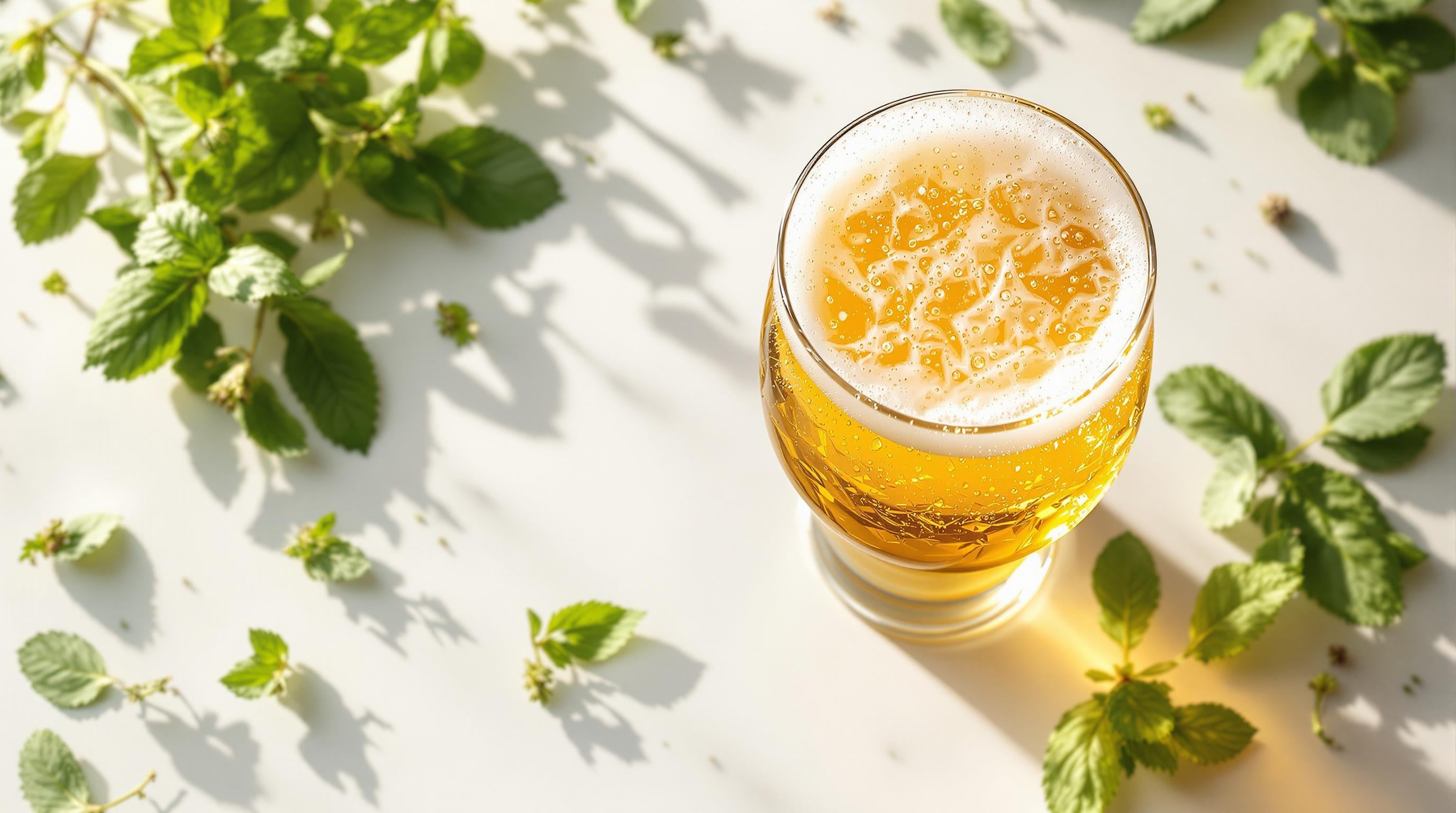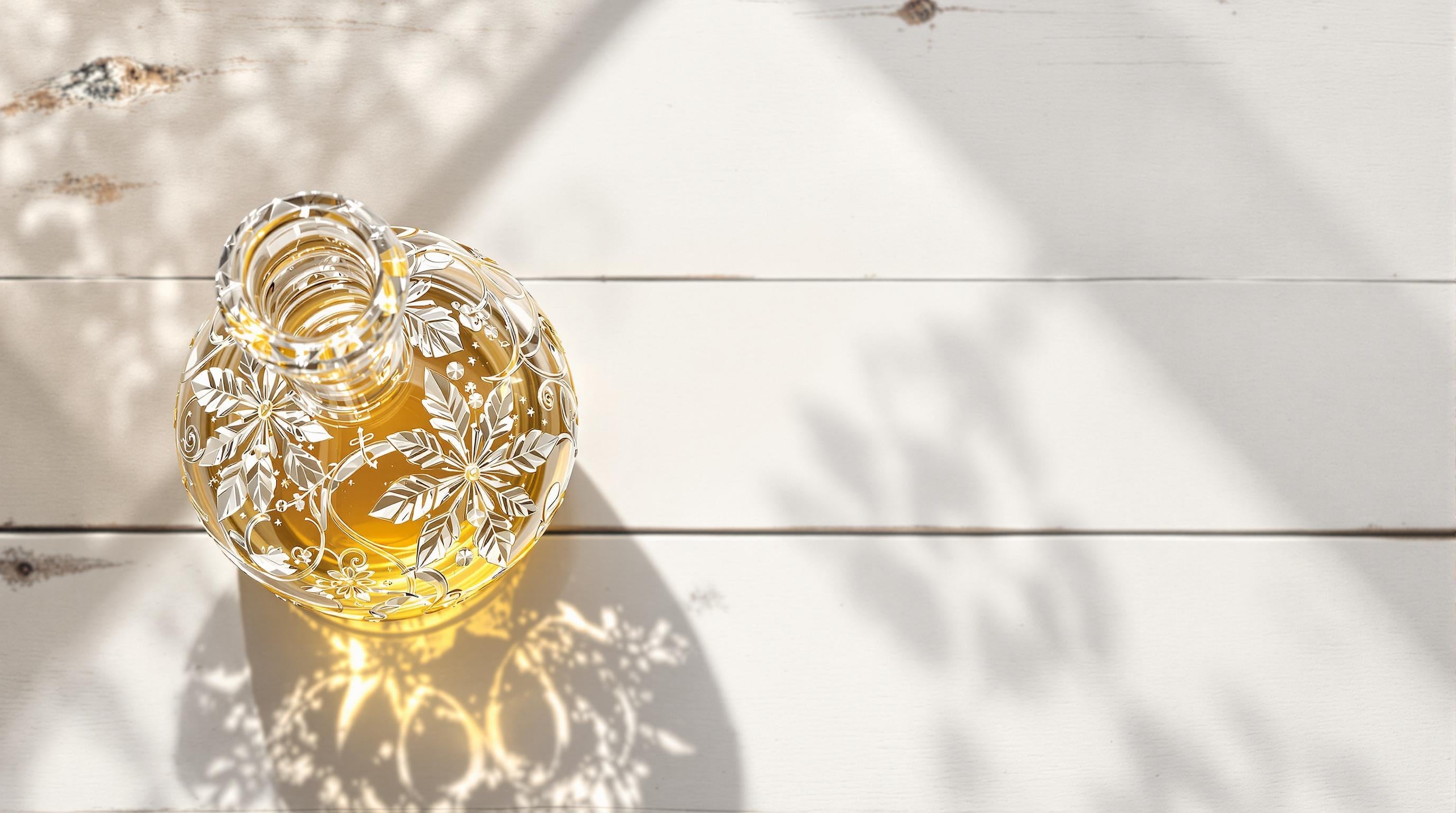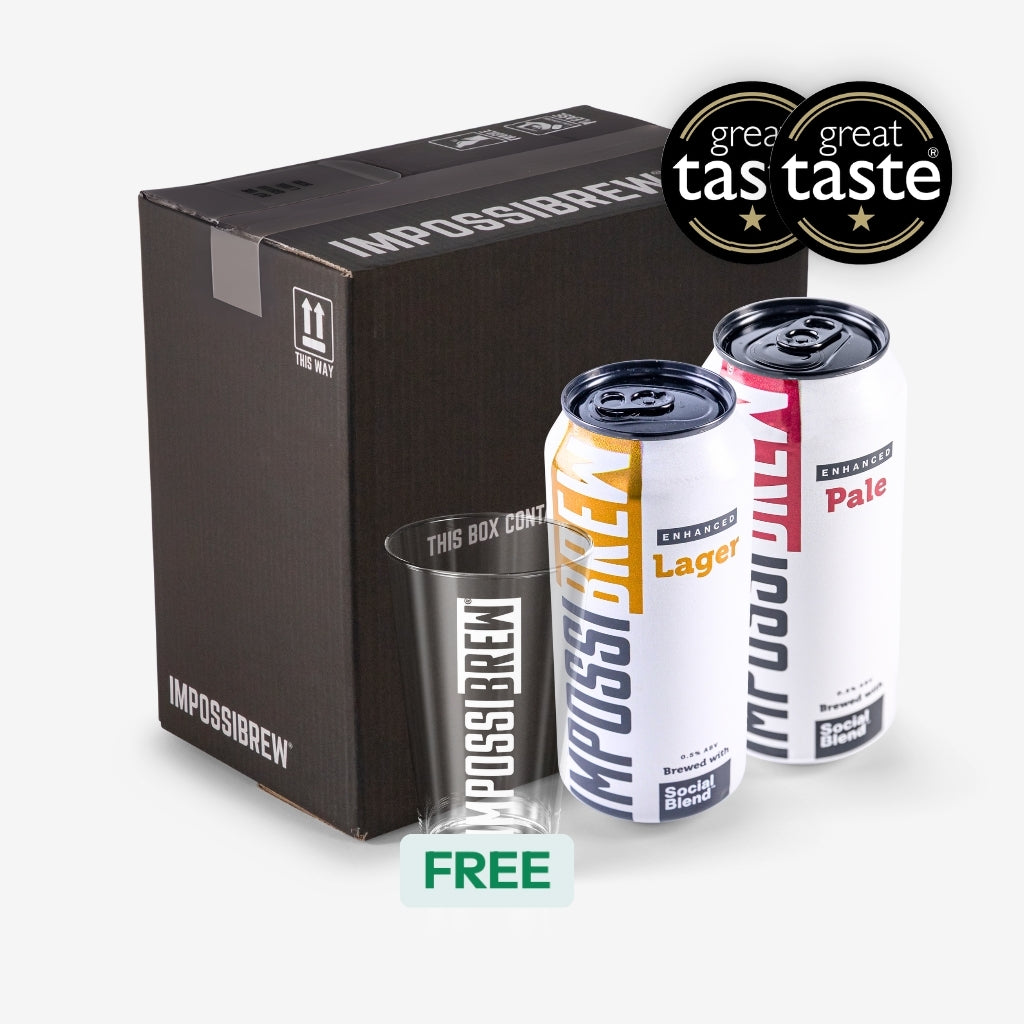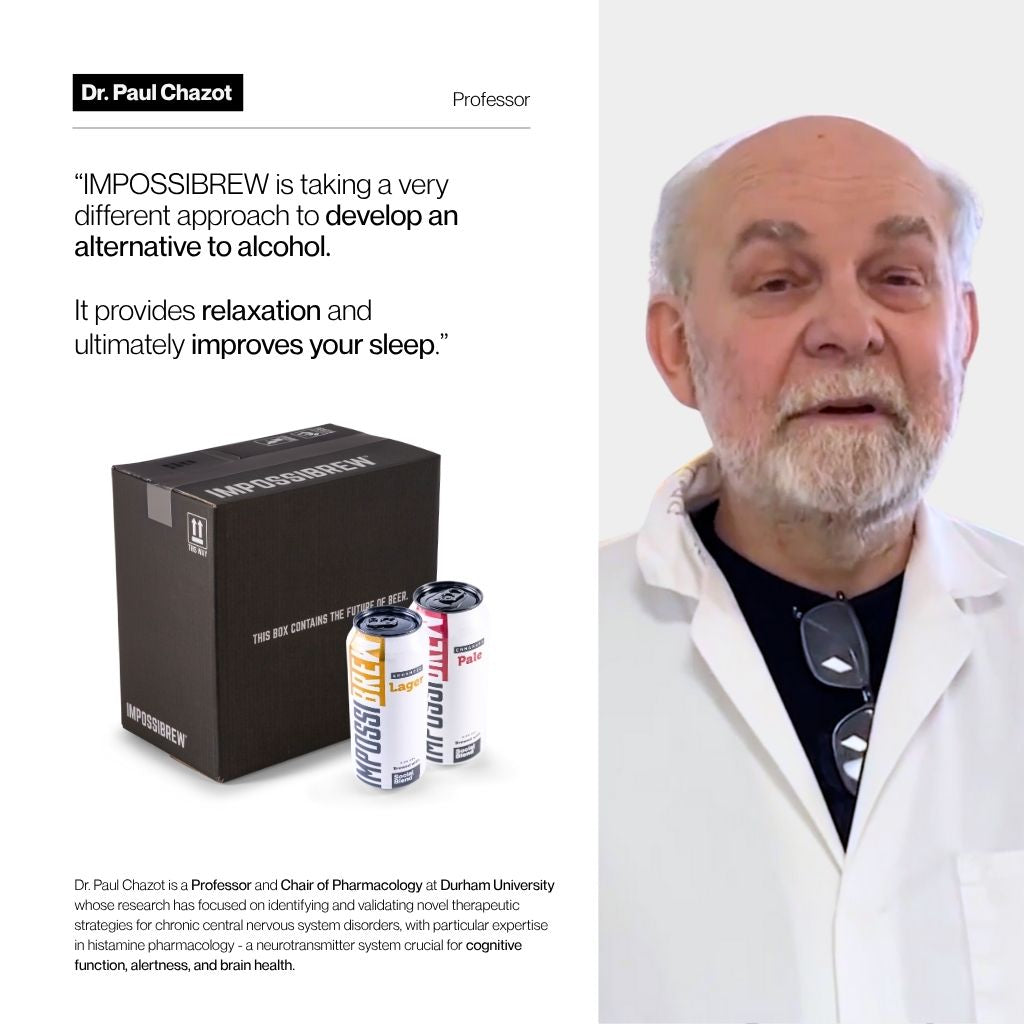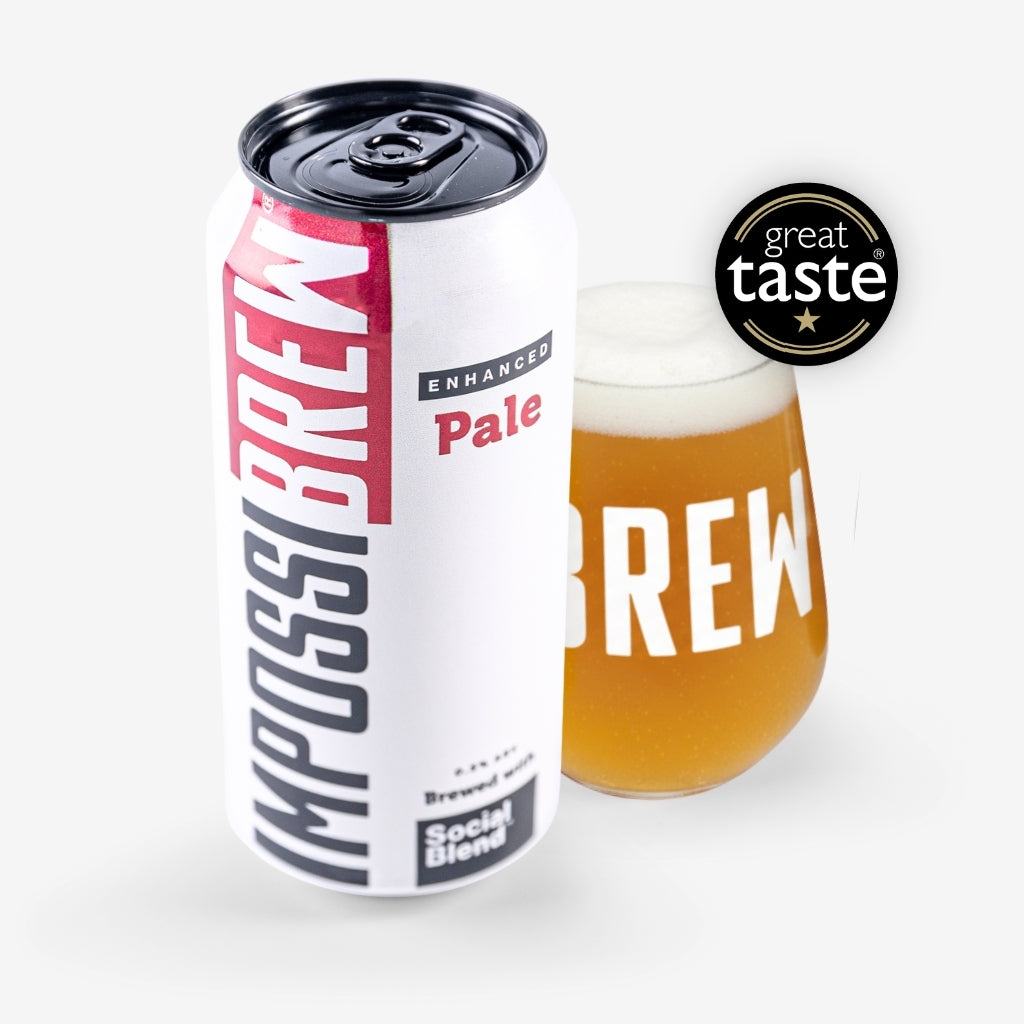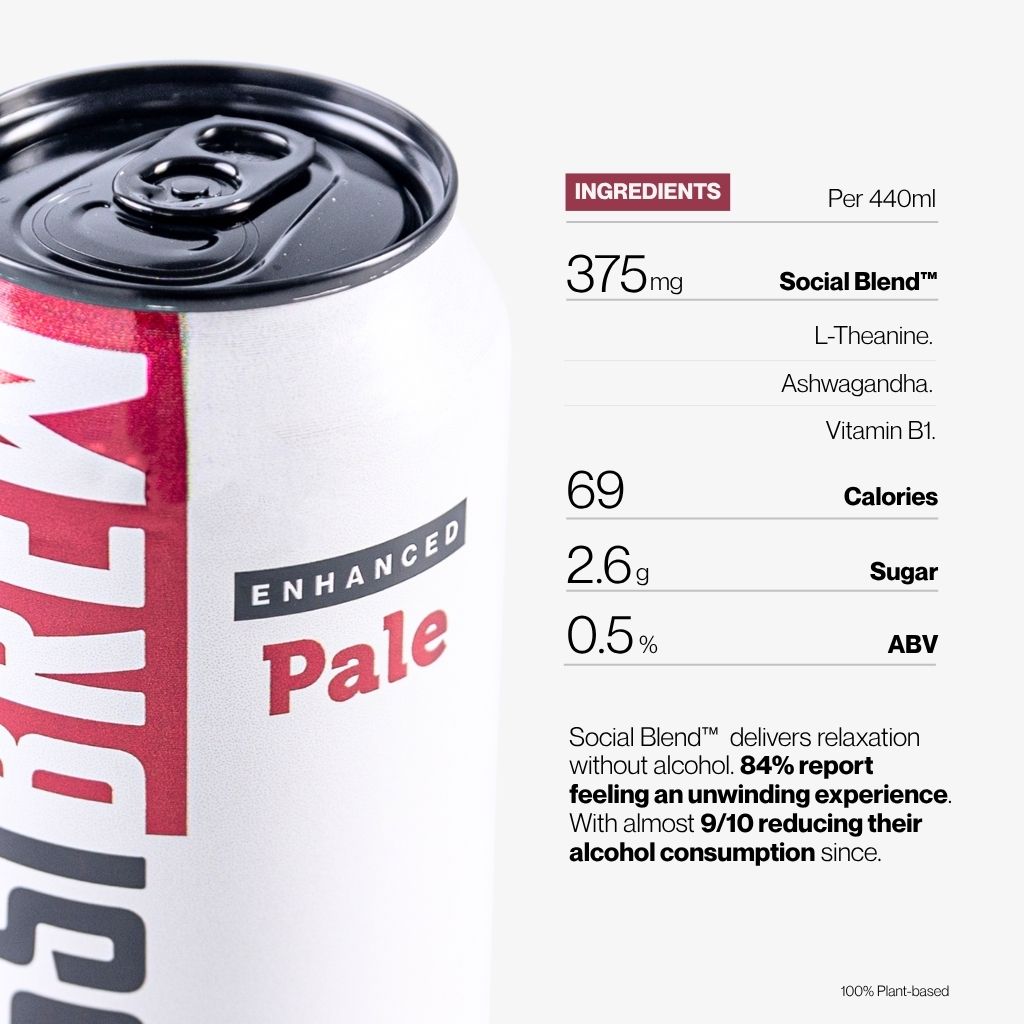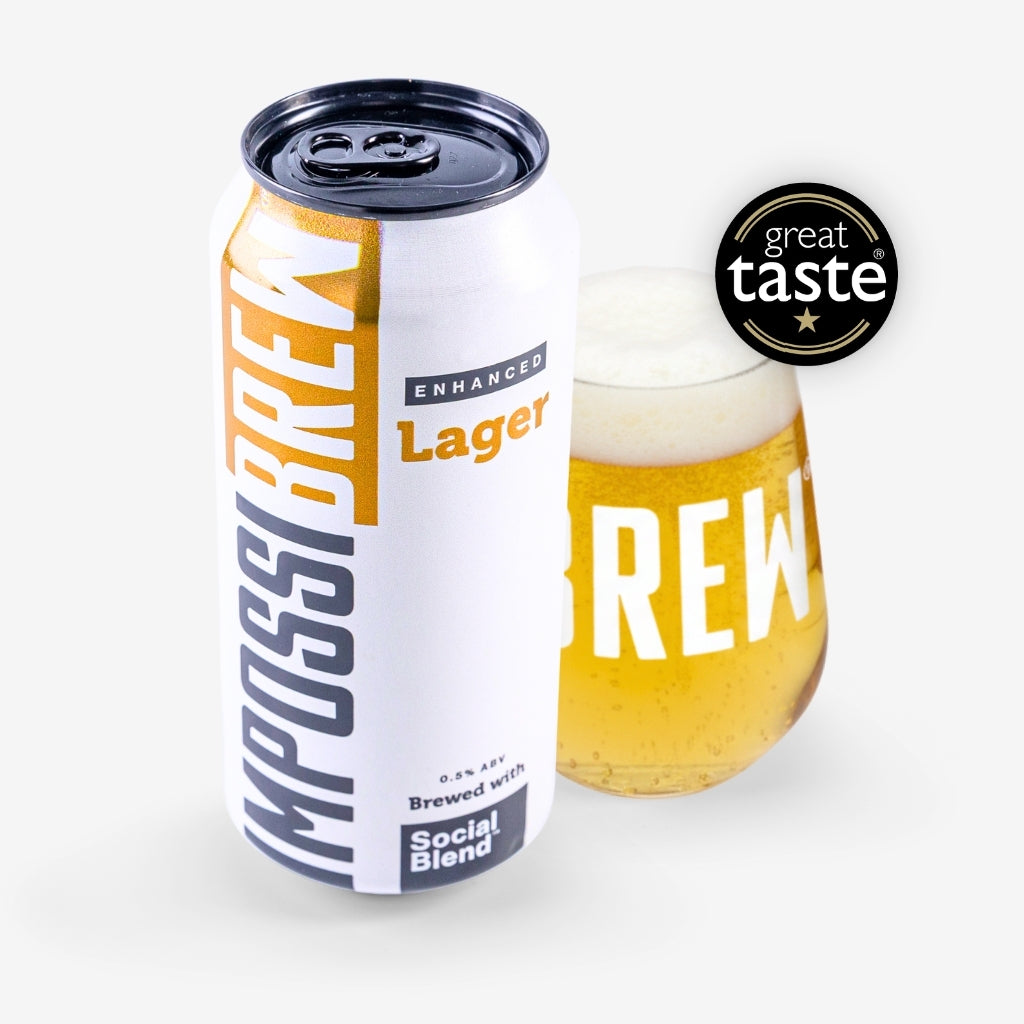5 Common Problems in Non-Alcoholic Beer Taste Solved
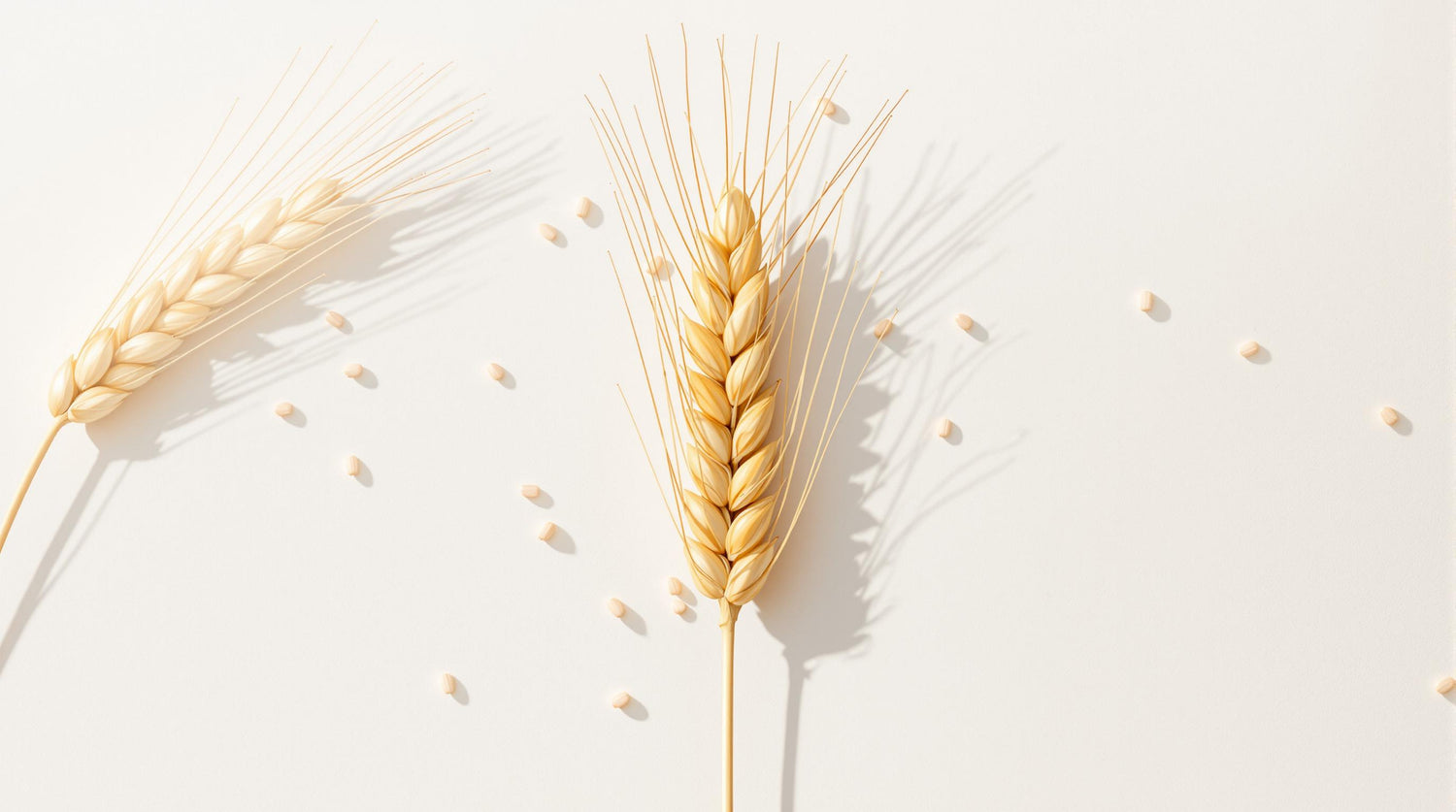
Non-alcoholic beer has come a long way, but it still faces five main taste challenges. Brewers are now solving these issues with innovative techniques:
- Thin Body and Weak Mouthfeel: Non-alcoholic beer often feels watery due to the absence of ethanol. Brewers improve texture using specialty malts (like dextrin or wheat malt), high-temperature mashing, and additives like maltodextrin.
- Too Much Sweetness: Residual sugars from incomplete fermentation can make these beers overly sweet. Adjusting mashing temperatures, using maltose-negative yeast, and balancing hops help control sweetness.
- Unwanted Flavors: Off-flavors like diacetyl (buttery) and DMS (vegetable) can ruin the taste. Brewers prevent these by controlling fermentation temperatures, improving filtration, and protecting beer from light exposure.
- Missing Hop Flavor: Alcohol removal often strips hop aroma. Techniques like dry hopping, late hot-side additions, and CO₂ extracts restore and enhance hop character.
- Missing Alcohol Sensation: Without alcohol, beers lose warmth and body. Brewers mimic this by adding glycerol, dextrins, or even functional blends like IMPOSSIBREW®’s Social Blend™ to recreate the relaxing and sensory effects.
Quick Comparison of Solutions
| Problem | Cause | Solution |
|---|---|---|
| Thin Body | Loss of ethanol and compounds | Use specialty malts, maltodextrin, and high-temperature mashing |
| Too Much Sweetness | Residual sugars | Adjust mashing, use maltose-negative yeast, balance hops |
| Unwanted Flavors | Chemical compounds | Control fermentation, advanced filtration, protect from light exposure |
| Missing Hop Flavor | Alcohol removal | Dry hopping, late additions, CO₂ extracts |
| Missing Alcohol Sensation | Lack of ethanol | Add glycerol, dextrins, or functional blends |
Brewers are closing the flavor gap between non-alcoholic and regular beer by addressing these challenges with modern brewing techniques and ingredient innovations.
1. Thin Body and Weak Mouthfeel
Why Non-Alcoholic Beer Feels Thin
Non-alcoholic beer often feels watery because removing ethanol reduces viscosity and strips away key compounds like dextrins and arabinoxylans. These compounds play a big role in giving beer its texture. For example, commercial beers typically have arabinoxylan levels between 0.5 to 1.9 grams per liter. During dealcoholization, these levels drop, leading to a thinner mouthfeel.
Improving Body and Texture
Brewers address this issue by using specific malts to add body and improve texture:
| Malt Type | Recommended Usage | Effect on Body |
|---|---|---|
| Dextrin Malt | 3–5% of grain bill | Adds unfermentable sugars without altering color |
| Wheat Malt | 3–10% of grain bill | Improves mouthfeel and foam stability |
| Crystal Malts | 2–5% of grain bill | Contributes body and residual sweetness |
To further enhance body, mash at 160–165°F (71–74°C) for 5–10 minutes. This limits fermentability and helps retain texture. Adding maltodextrin is another effective way to boost body. Brewers often combine specialty malts like Carafoam with light crystal or Munich malt for better results.
Brands like IMPOSSIBREW® show how careful ingredient combinations can tackle these texture challenges while keeping the beer enjoyable in social settings. These techniques also set the stage for addressing sweetness and flavor balance in non-alcoholic beers.
Non-Alcoholic Beers and How to Brew Them
2. Too Much Sweetness
After addressing texture, managing sweetness becomes the next key step in maintaining balanced flavor.
Where Extra Sweetness Comes From
Excess sweetness often results from incomplete fermentation, leaving behind sugars like maltose and maltotriose. Brewers need to carefully regulate sugar conversion during production to avoid both overly sweet profiles and excessive alcohol content.
Here are some major factors:
| Process | Effect | Detail |
|---|---|---|
| Fermentation Arrest | High residual sugar content | Techniques like cold crashing, centrifugation, or microfiltration stop fermentation early. |
| Mashing Temperature | Impacts sugar conversion | Temperatures outside the ideal range can disrupt carbohydrate conversion. |
| Base Malt Ratio | Controls fermentable sugars | Using too much base malt (over 50%) can lead to simple, overly sweet worts. |
"All these beers have a detrimental residual sweetness that not only can impact overall quality but also be dangerous in the case of refermentation in package." - Federico Tondini
How to Reduce Sweetness
Adjusting the mashing process is an effective way to control sweetness. For example, keeping mashes short and above 161°F (72°C) encourages dextrin formation while limiting the production of maltose.
Here are some techniques to manage sweetness:
-
Hop Management
Low-alcohol beers tend to amplify bitterness perception, so hops need to be carefully balanced. Late-addition hops can enhance flavor and aroma without adding too much bitterness, which helps offset residual sweetness. -
Grain Selection
Specialty malts like Vienna, Munich, and Rye add depth and complexity to the flavor without introducing more fermentable sugars. This creates a richer profile that can help mask sweetness. -
Yeast Selection
Using maltose-negative yeast strains is another effective method. These yeasts consume less sugar, helping to control sweetness while maintaining the desired flavor.
For commercial brewers, experimenting with different ingredients and techniques on a small scale can help find the right balance. Brands like IMPOSSIBREW® show how thoughtful ingredient choices can result in non-alcoholic beers that are flavorful without being overly sweet.
This focus on sweetness sets the foundation for addressing other unwanted flavors in non-alcoholic beers.
sbb-itb-a752bf8
3. Unwanted Flavors
Crafting non-alcoholic beer comes with its own set of challenges, and one of the most pressing is controlling undesirable flavors. These off-flavors can significantly impact the drinking experience, adding to the complexity already seen with texture and sweetness adjustments.
Why Bad Flavors Develop
Unpleasant tastes in non-alcoholic beer often result from specific chemical compounds. Here’s a breakdown of some common off-flavors, their characteristics, and causes:
| Off-Flavor | Taste Description | Detection Threshold | Common Cause |
|---|---|---|---|
| Diacetyl | Buttery | 0.04 mg/l | Incomplete fermentation |
| Dimethyl Sulfide (DMS) | Vegetable | 0.025 mg/l | Insufficient boiling |
| Mercaptan | Rotten vegetables | 1 µg/l | Yeast stress |
| Hydrogen Sulfide | Rotten eggs | 4 µg/l | Bacterial contamination |
| Lightstruck | Skunky | 4 ng/l | Light exposure |
In alcohol-free beers, the detection threshold for aldehydes like 3-methylbutanal is much lower - over 91 times lower than in regular beer. This makes controlling these flavors even more critical.
Preventing Bad Flavors
To achieve a flavor profile closer to traditional beer, managing these off-flavors is essential. Innovative techniques, such as selective adsorption with hydrophobic ZSM-5 type zeolites, have shown promising results. These methods can reduce unwanted aldehydes by 43.7–70.2% while maintaining key elements like bitterness, pH, and color.
Here are some effective strategies to prevent off-flavors:
- Temperature Control: Keeping fermentation temperatures consistent helps avoid yeast stress and the production of unwanted compounds.
- Light Protection: Using dark or opaque packaging prevents exposure to light, which can cause skunky flavors.
- Advanced Filtration: Techniques like vacuum distillation are preferred over steam distillation as they retain desirable aromas while removing unwanted compounds.
Ingredient selection also plays a critical role. Research by Methner et al. highlights how choosing the right yeast strains can influence flavor. In their study, all 110 yeast strains tested were able to grow in the presence of iso-α-acids up to 50 IBU, showing the potential for better flavor control.
Modern production methods have made significant progress, achieving up to a 93% reduction in unwanted aldehydes compared to older processes. These advancements pave the way for further improvements, including refining hop character in non-alcoholic beers.
4. Missing Hop Flavor
Hop Flavor Loss Problems
Removing alcohol from beer often strips away much of the hop aroma, posing a major hurdle for crafting non-alcoholic beers. This happens because alcohol plays a key role in how hop compounds interact and develop, directly impacting the beer's flavor and aroma.
"What non-alcoholic beer lacks is the aroma from hops. When you remove the alcohol from the beer, you also kill the aroma that comes from hops. Other methods for making alcohol-free beer by minimizing fermentation also lead to poor aroma because alcohol is needed for hops to pass their unique flavor to the beer."
"Even a low amount of alcohol is important for flavor. But I don't know if [many] craft brewers are ready to do this on a small scale. It is an extreme challenge."
Adding More Hop Taste
Brewers have developed innovative techniques to tackle the challenge of hop flavor loss in non-alcoholic beers. These methods focus on preserving and enhancing hop character to create a more flavorful product. Here are some effective approaches:
| Technique | Application | Benefits |
|---|---|---|
| Late Hot-Side Addition | Add hops near the end of the boil | Helps retain delicate aromatics |
| Dry Hopping | Add hops after fermentation | Boosts aroma without adding bitterness |
| Keg Hopping | Add hops directly to the keg | Maintains consistent hop flavor |
| CO₂ Extract Usage | Add during the whirlpool stage | Delivers a balanced bitterness |
Balancing hop flavor is just as important as managing texture and sweetness to craft a well-rounded beer.
"If you see it as a beer product, you are making a mistake... We are all trying to find ways to make arrested fermentation more delicious."
In Pittsburgh, Paul Schneider, Head Brewer at Cinderlands, developed a unique process that involves using 0.67 pounds per barrel of T-90 hops (mainly Sabro) in the whirlpool. He also incorporates three proprietary hop products between the heat exchanger and brite tank - one for mouthfeel, one with fractionated hop oil, and one for variety-specific flavor.
Maintaining a temperature of 60–65°F (16–18°C) during dry hopping is essential for preserving the delicate compounds in hops. Additionally, brewers can cater to consumer preferences by choosing hop varieties rich in fruity terpenes, esters, and aldehydes. These compounds not only enhance flavor but also help mask overly sweet or worty notes.
Brands like IMPOSSIBREW® showcase how these techniques can result in bold, hop-forward flavors while keeping the aroma and complexity intact. Strengthening hop character works hand-in-hand with efforts to improve body, sweetness, and off-flavors, resulting in a more satisfying non-alcoholic beer.
5. Missing Alcohol Sensation
When brewers remove alcohol from beer, they face the challenge of filling the sensory gap it leaves behind. It's not just about taste - alcohol affects aroma, texture, and overall experience.
How Alcohol Affects Beer Taste
Alcohol plays a big role in shaping a beer's flavor and texture. Without it, beer often tastes maltier, with less fruitiness and sweetness. That familiar warming sensation? Gone. Here's a quick breakdown:
| Alcohol's Role | Impact on Beer |
|---|---|
| Aroma Release | Helps distribute volatile compounds, boosting aroma |
| Mouthfeel | Adds warmth and a richer body |
| Flavor Balance | Balances sweetness and maltiness |
| Compound Retention | Helps retain key flavor molecules |
Recreating the Experience
To fill this sensory gap, brewers are using creative techniques to replicate the effects of alcohol. One standout example is IMPOSSIBREW®'s Social Blend™. Developed with Dr. Paul Chazot, a Bioscience Professor at Durham University, this blend combines ingredients like L-Theanine and Ashwagandha Root to mimic alcohol's relaxing and sensory effects.
Some of the technical tricks brewers are using include:
- Adding dextrins or glycerol: These mimic ethanol's role in mouthfeel and flavor retention.
- High-temperature mashing: Boosts alpha-amylase activity, enhancing body.
- Oral mucoadhesives: Help hold on to flavor compounds that alcohol would normally preserve.
The results? Market feedback shows that 71% of IMPOSSIBREW® customers felt more relaxed after drinking beers enhanced with Social Blend™, and 88% cut back on alcohol after discovering these options.
These techniques, paired with thoughtful ingredient combinations, are helping alcohol-free beers deliver a more complete sensory experience.
Conclusion: Better Non-Alcoholic Beer Taste
The non-alcoholic beer industry has made huge strides in improving flavor by refining brewing techniques and combining ingredients in smarter ways. The numbers back this up: the global market is expected to grow from $18 billion in 2021 to $30 billion by 2025.
At the University of Copenhagen, researchers have found a way to produce monoterpenoids - compounds responsible for hoppy flavors - using drastically fewer resources. Their method uses over 10,000 times less water and cuts CO₂ emissions by more than 100 times compared to traditional processes. Innovations like this are changing what consumers expect from non-alcoholic beer.
In fact, over 60% of first-time drinkers have responded positively to the improved taste. IMPOSSIBREW®’s Social Blend™, created in partnership with Durham University scientists, is a great example of how functional ingredients can enhance flavor while offering additional perks.
Shifting consumer preferences are also driving this change. Nearly half (49%) of consumers are looking for low-calorie options, while 43% prioritize better-quality ingredients. Firestone Walker CEO Nick Firestone highlights this growing momentum:
"This is not a fringe style... It's small but growing is the headline. It's becoming crowded very quickly. Brewers are great innovators and, as soon as they see a category or a style that's growing, you see a lot of people jumping in. It's great for non-alcoholic beer because it really legitimises the category."
With advancements in brewing technology and ingredient research, non-alcoholic beer is closing the flavor gap with traditional beer and raising the bar for quality.
Related Blog Posts
Next Generation Alcohol-Free Beer
IMPOSSIBREW®: The Enhanced Non-Alcoholic Beer designed as an alternative to full ABV beers using patent-pending technology*.
Enjoy a healthier daily wind down with the beer that matches the taste and feeling of traditional alcohol.
Keep the pleasure and ritual of drinking without worrying about your health.
Get Started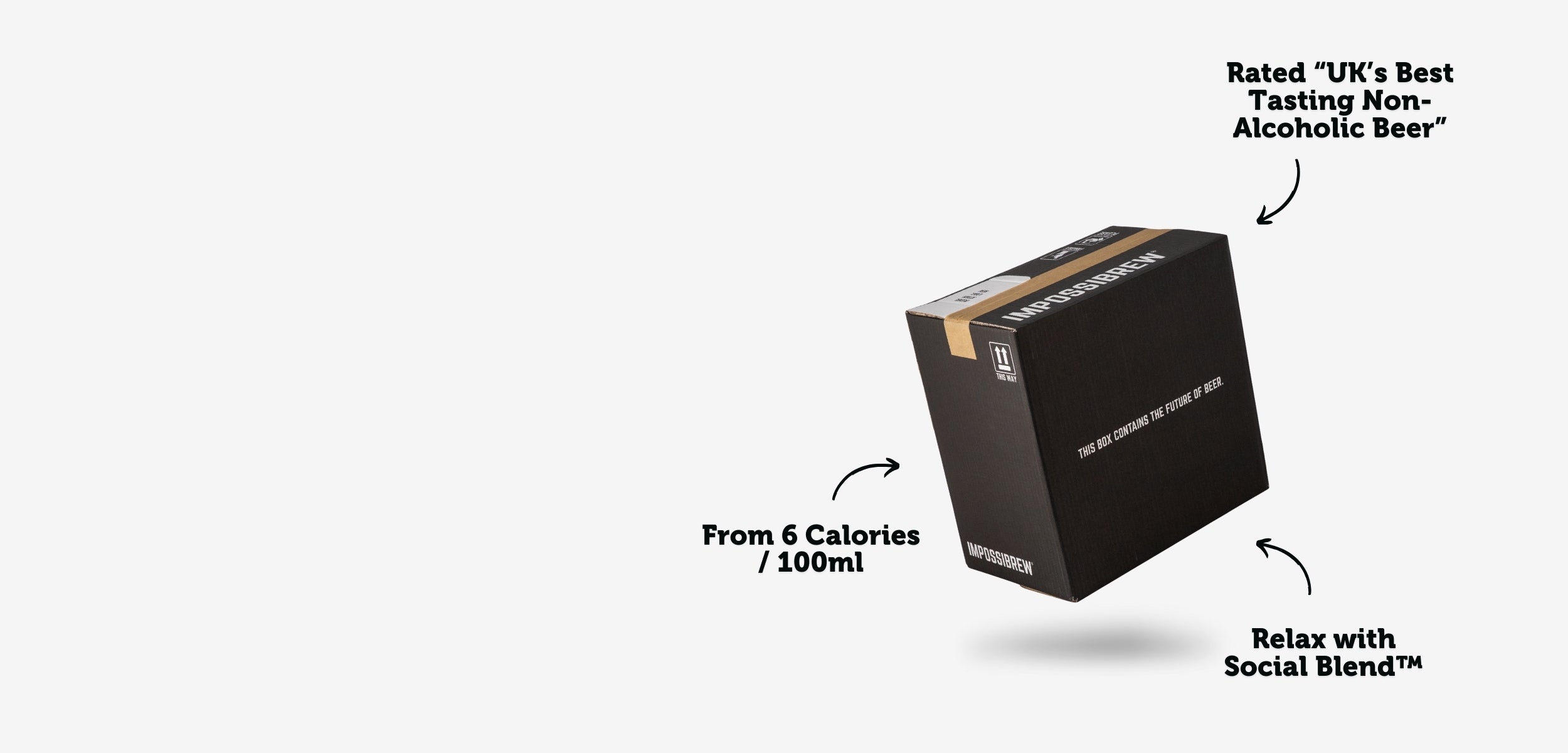
Next Generation Alcohol-Free Beer
IMPOSSIBREW®: The Enhanced Non-Alcoholic Beer designed as an alternative to full ABV beers using patent-pending technology*.
Enjoy a healthier daily wind down with the beer that matches the taste and feeling of traditional alcohol.
Keep the pleasure and ritual of drinking without worrying about your health.
Get StartedAward-winning Taste
Rated "UK's Best Non-Alcoholic Beer" by the prestigious World Beer Awards.
From 16 Calories / 100ml
Low Calorie. Low Carb. Vegan-friendly. <0.5% ABV. Gluten-Free (Lager)
Social Blend™
Our proprietary alcohol alternative made from a blend of science-backed ingredients designed to replicate the sensory, social and relaxing experience of drinking. Read more here.
Got Questions?
Find our most commonly asked questions below or ask our AI Brewer for instant answers.
What is IMPOSSIBREW®?
IMPOSSIBREW® is a pioneering non-alcoholic beer brand based in the UK that aims to create the world's most complete alcohol alternative using patent-pending technology.
Founded by Mark Wong in 2021 and working with some of the world's best professors, scientists and expert brewers, IMPOSSIBREW® specialises in expertly crafted non-alcoholic beers designed to match full ABV beers in both taste and feeling.
Product Range
IMPOSSIBREW® offers a range of enhanced non-alcoholic beers, including:
- Enhanced Lager (0.5% ABV)
- Enhanced Pale Ale (0.5% ABV)
- Limited Editions (Seasonal)
Key Benefits
The key feature that sets IMPOSSIBREW® apart is its proprietary "Social Blend™" - a combination of active botanical ingredients and nootropics using patent-pending technology* designed to recreate the relaxing effects of alcohol without the negative side effects.
Along with record-breaking quality flavour that comes from a unique process without removing alcohol.
Social Blend™ Ingredients
Developed with leading scientists in top UK universities, Social Blend™ includes:
- L-Theanine
- Ashwaghanda
- Soluble Plant Fibres
- Vitamin B1
- Various Plant Extracts.
These ingredients are chosen for their potential to boost serotonin, promote relaxation, and create a calming effect similar to the "one or two pint feeling" without hangovers.
See more details on our very own research paper, with over 1,000 participants:
- More than 70% said they felt relaxed after consuming IMPOSSIBREW®.
- 88% have reduced alcohol consumption since discovering IMPOSSIBREW®.
- 95% have told a friend about IMPOSSIBREW® after trying.
- 3/4 say that IMPOSSIBREW® is "the most complete alcohol alternative currently available on the market today".
Recognition
IMPOSSIBREW® has received several notable achievements:
- Featured on BBC's Dragons' Den
- Awarded the first and only Gold Medal in the No/Low beer category from the London Beer Competition
- Received multiple industry Gold awards in categories against Full-ABV beers
- Most followed No/Low Alcohol brand on TikTok globally.
Mission and Vision
IMPOSSIBREW® is on a mission to redefine non-alcoholic drinking by creating better-than-alcohol alternatives for those who love beer but want to avoid the health risks associated with alcohol consumption.
The company aims to become the global leading alcohol alternative brand, focusing on helping people transition to a healthier mode of relaxation without the traditional issues and side effects of alcohol.
Production and Ingredients
IMPOSSIBREW® combines traditional brewing methods with their proprietary Social Blend™ along with patent-pending technology*
The beers are made with traditional brewing ingredients such as water, malted barley, wheat, hops, and yeast, in addition to the Social Blend™ components - leveraging their unique cryogenic fermentation process, which means no alcohol is ever removed from the product - ensuring the most authentic quality taste you've come to expect.
Who is it for?
IMPOSSIBREW® caters to consumers who:
- Are busy professionals and parents who would like to unwind with a drink but don't want the hangovers.
- Enjoy the taste and relaxing experience of beer
- Are looking for healthier alternatives to alcohol, with lower calories, carbs and sugar
- Want to avoid hangovers and other negative effects of alcohol consumption
- Are interested in functional beverages with potential mood-enhancing properties
By offering a unique product that aims to replicate both the taste and feeling of alcoholic beer, IMPOSSIBREW® is positioning itself at the forefront of the growing non-alcoholic beverage market.
Get Started Today
Give it a try today with our Welcome Bundle and get 2 Free Beers with your first purchase. Get it delivered straight to your door, risk-free with our 30-day money-back guarantee.
We hope you enjoy them as much as we do and we can't wait for you to try.
*Patent pending in the UK under application number GB2415685.3
How does 'Social Blend™' work?
Social Blend™ is our proprietary alcohol alternative made from a blend of science-backed ingredients using patent-pending technology*.
Designed to replicate the sensory and social relaxing experience of drinking, minus the headaches (and bad decisions).
Developed with Dr Paul Chazot, Bioscience Professor and Chair of Pharmacology at Durham University.
Key Components and Mechanisms
- L-Theanine:
- Ashwagandha Root:
- Vitamin B1 (Thiamine):
- Various nootropic herbs:
Benefits
- Relaxation: The blend promotes a state of relaxation without the sedative effects typically associated with alcohol.
- Mental Calm: By boosting alpha brain waves and serotonin levels, it helps maintain a calm and focused mental state.
- Stress Relief: The combination of L-Theanine, Ashwagandha, and Vitamin B1 helps mitigate stress and anxiety.
- Mood Enhancement: The inclusion these ingredients and other botanicals supports mood regulation and overall positive outlook.
IMPOSSIBREW®'s Social Blend™ is a carefully crafted combination of nootropic and adaptogenic ingredients designed to offer a relaxing and mood-enhancing experience without the drawbacks of alcohol. It leverages the natural properties of its components to promote relaxation, reduce stress, and enhance mood, making it a unique alternative to traditional alcoholic beverages.
(Read our latest research paper here)
*Patent pending in the UK under application number GB2415685.3
Do you ship overseas?
We ship to the UK Mainland for free when you spend over £35
We aim to expand internationally soon - stay tuned!
If you have any queries, feel free to email: hello(@)impossibrew.co.uk
How long will it take to get my orders?
For UK mainland deliveries, normal orders processed here will take 1-3 business days to arrive, with an optional upgrade to Next Day Delivery available (12pm cut-off).
Delivery details will be provided in your confirmation email.
How is 0.5% ABV alcohol-free?
Yes, we know it's confusing. Isn't 0.5% ABV still alcoholic? Officially, 0.5% ABV is classified as Dealcoholised.
- In fact, most things we consume daily have more than 0.5% ABV
- Burger Rolls - 1.2% ABV
- Orange Juice - 0.5% ABV
- Ripe Banana - 0.5% ABV
After more than 2 years of research, we've found that the 0.5% ABV from our natural brewing process significantly increases both flavour and mouthfeel - without spiking your blood alcohol level (BAC).
Is it really gluten-free?
Yes, IMPOSSIBREW® Enhanced Lager is gluten-free. Even though it contains wheat and barley, our beers have been third-party tested to contain less than 10 parts per million (PPM) of gluten, which meets the criteria to be listed as, and labeled gluten-free.
Does it have alcohol tax?
No. While it is true that our beers don't contain alcohol, and thus don't incur UK alcohol duty, we'd like to highlight some factors here that might be helpful in reflecting the value we provide.
- One-to-One Brewing Process: At IMPOSSIBREW, we take pride in our unique brewing techniques. Unlike other non-alcoholic beers, our products are never diluted, watered-down, or have their alcohol content removed - and some even dilute their alcoholic beers up to 5x. This means that our brewing process involves the same level of craftsmanship, time, and resources as a traditional craft beer, resulting in comparable production costs.
- Effective Nootropics: In our commitment to creating the most relaxing non-alcoholic beers, we utilise only the highest quality nootropics as our active ingredients, in safe and effectives dosages. At current alcohol tax rates for a 5% ABV beer, the cost of our nootropics more than double that. Instead of contributing the amounts as tax, why not have it contribute to the product quality itself?
- Small Scale Brewing: Currently, we operate on a smaller scale, which makes us less competitive than large, commercial brewers (often +10,000x our brewing size). As a growing business, we are passionate about our mission to create unique, high-quality non-alcoholic experiences, and we truly appreciate your support. As we continue to grow and expand our production capabilities, we look forward to passing on even more savings to our valued community!
At IMPOSSIBREW, we prioritise offering our customers an enhanced, premium, non-alcoholic beer experience by combining innovative brewing techniques, quality active nootropic ingredients, and award-winning taste. While our pricing may differ from other non-alcoholic competitors, we believe that the value proposition and unique experience our beers provide are well worth it.
At the end of the day, tasting is believing. So give it a try and let us know what you think - risk-free with our IMPOSSIBREW® Guarantee.
Who shouldn't drink IMPOSSIBREW®?
It is not recommended for pregnant or breastfeeding women, those with certain medical conditions like GI disorders or hypertension, or individuals taking specific medications such as antidepressants, immunosuppressants or blood thinners. If you fall into any of these categories, it's best to consult with your doctor first.
Ashwagandha can lead to overstimulation (i.e. restlessness) if taken alongside thyroid medication.
What is your philosophy?
For thousands of years, we had only one way to unwind together. One way to let our guards down. One way to bridge the gap between who we are and who we are with others.
Not because it was perfect. But because it was all we had.
We decided that wasn't good enough.
We exist because we believe in a world where social connection doesn't demand compromise.
Where being present with others doesn't mean being absent from yourself. Where letting go doesn't mean losing control.This isn't about removing alcohol. This is about something better.
Our Social Blend™ technology isn't an accident. It's the result of questioning everything we thought we knew about social drinking. About working with scientists to understand what we're really seeking in these moments of connection. About daring to imagine something that wasn't possible before.
We believe the greatest innovations don't just solve problems - they change how we live. They make us question why we ever settled for less.
That's what we're building. Not just a drink, but a new way forward. A future where social connection comes without compromise. Where tradition meets innovation. Where science meets ritual.
This is the future of social drinking.
Got more questions?
Speak to our AI Brewer here for instant answers.
Or email us at hello@impossibrew.co.uk
Our customer support is available Monday to Friday: 9am - 5:30pm.

















